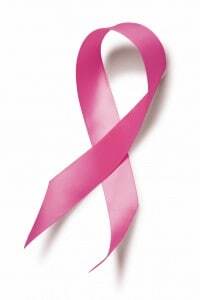This blog was originally published in The Healthcare Blog.
Like far too many women, I know what it means to confront the prospect of breast cancer. I spent the better part of a year in watchful waiting for what eventually proved to be a benign lump. Some of my friends participate in randomized clinical trials in hopes of being among the first to benefit from a promising new therapy. Some have passed away.

All have faced agonizing challenges sorting through options and confusing medical jargon, poring over statistical data they may or may not understand, and trying to reach a treatment decision in the midst of their fear.
A recent observational study reported in The Journal of the American Medical Association (JAMA) compared survival rates for several different treatment approaches to breast cancer. The primary finding picked up in the press was that the long-term survival rate for women undergoing bilateral mastectomy was not statistically different than that for women who chose lumpectomy and radiation. I’m not going to outline the entire study – there are a number of good summaries available elsewhere. What particularly caught my interest was the way the study was conducted.
What excited me about the new study is that it is a terrific example of the secondary use of data for informatics-based clinical research. That is, information captured as part of the normal care process for a single patient is combined with information from an entire population segment in order to compare clinical alternatives.
In this case, the study used data from the California Cancer Registry from 1998-2011. The final study population was close to 200,000 early-stage breast cancer patients of diverse racial, ethnic, age and economic backgrounds. That diversity turned up a number of interesting findings relative not only to survival, but to treatment choices. Like all studies, it also raised questions that could not be answered by the available data.
For example, the data showed an annual increase in bilateral mastectomy of 14.3%, but the dataset has no information on how many of the recipients had genetic test results that might have contributed to their decision.
Studies like this one are becoming more and more common.
Epic EHR and other systems used for patient care. Informatics-enabled observational research certainly can’t replace randomized clinical trials, especially for testing new therapies. But to me, the clinical research that becomes possible as we normalize and digitize healthcare information is tremendously encouraging:
- While randomized trials typically have entrance criteria that weed out things like co-morbidities and prior treatments, observational studies like this one can include the kinds of “messy” patients most representative of the general population.
- The scale and speed with which informatics-enabled research can be conducted and can produce usable evidence is almost breathtaking when compared with traditional research.
- Studies like this one can look at issues randomized trials cannot. The authors point out that there is no randomized trial evidence to inform whether bilateral mastectomy improves survival, and such a trial is unlikely ever to occur. Yet more and more women have been choosing this treatment option with very little evidence to guide them.
Increasingly, organizations are recognizing the role of sharing healthcare information and the strategic importance of interoperability in creating the data ecosystems to support observational research. Health information networks (HINs) such as state and regional health information exchanges (HIEs) like Hixny in New York State are starting to play more of a role in formal informatics-based research. Centers of Excellence like the Victorian Comprehensive Cancer Centre in Australia and registries like the UK Renal Data Collaborative in the UK have as explicit goals the facilitation of national and international research, and are investing in interoperability as the foundation on which to support those goals.
In his troubling book, How We Do Harm, Otis Brawley discusses the impact of race and socio-economic status on access to care, survival, and treatment options. The JAMA study findings accord well with his narrative. He also shares extensively on the consequences to individuals and society when treatment decisions are based on fear and inadequate evidence. As this study shows, more aggressive treatment isn’t necessarily better, even if you have the resources to pursue it.
Those grappling with treatment decisions for breast cancer now have a little more evidence to work with, and it is encouraging to see that health information technology is helping to uncover further evidence for care decisions with each new day.




































